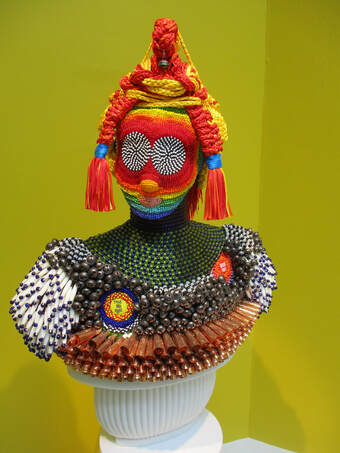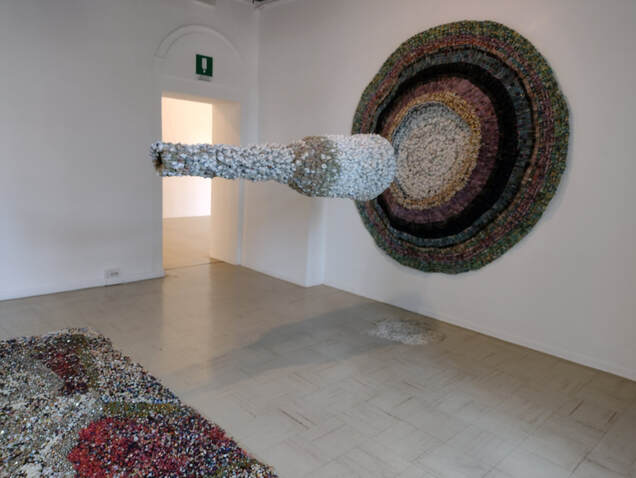- About
- Contact
- Blog
- CONSUME
- GALLERY
-
PERAMBULATIONS, Etc.
- Old Parcels Office, Scarborough
- Ghent
- White Cube
- Cornerhouse, Manchester
- Venice 2019
- Tectonics
- Leeds City Art Gallery
- Hayward Gallery, London
- Hull University Art Gallery
- Whitney Gallery, New York
- Royal Scottish Academy, Edinburgh
- Talbot Rice Gallery, Edinburgh
- Fruitmarket Gallery, Edinburgh
- Modern One & Two, Edinburgh
- Groeningemuseum, Bruges
- Humber Street Gallery, Hull
- Renwick Gallery, Washington DC
- Arenthuis, Bruges
- Ropewalk Gallery, Barton on Humber
- Geementmuseum, Den Haag
- Ferens, Hull
- Crescent Arts, Scarborough
- Walker Art Gallery, Liverpool
- Hepworth Wakefield
- Yorkshire Sculpture Park
- Stedelijk, Amsterdam
- Henry Moore Institute
- Louisiana
- SMK Copenhagen
- Yorkshire Sculpture International
- Tate Modern
- Whitworth, Manchester
 26th to 29th April Trains to Venice, all on time. With a couple of hours to spare in Geneva I find that my first and last impression was ‘What a dump!’ I’m sure out of the confines of the area around the station things improve, but in this vicinity you might anticipate a grand statement of majestic grandeur awaiting all the diplomats coming in for top level UN negotiations. Maybe they all fly in. Even the station itself looked tawdry and somewhat provincial. Unlike Milan’s railway station which reflects the grand vision of Il Duce. Finally in this travelogue vein, I now choose to stay in hotels in Mestre, not Venice itself. They’re far cheaper, less likely to suffer from mosquitoes, and have excellent links across to the crowded Dhaka-like streets of Venice. A 15-minute tram ride costs three euros return. And being in the municipality of Venice, you don’t have to spend five euros on a daily entry pass, although you have to register in advance where you’re staying. Apparently some Venetians are worried that this new tourist ‘entry ticket’ will turn Venice into a theme park. As if it wasn’t one already. Still, if gets perhaps around 20,000 euros out of each cruise ship a day, it will be worth it. Talking of cruises, this ad I saw on clickbait was amusing. I wonder if they sail down the Leeds and Liverpool canal? The theme of this year’s biennale—’Foreigners Everywhere’ - is thus highly appropriate. Too bloody many. The great thing about the biennale is that even when the daunting opening queues have been gobbled up, the main sites remain generally free of excessive hubbub. One of the first pavilions one comes across is Russia’s. In 2022 it was closed, but this time round it has been lent to Bolivia. Perhaps it was a bit last minute, since their show looked hastily put together. The Bolivians were very grateful to the Russian Federation for giving them the opportunity to be in such a prime spot, saying ‘Our presence in the Giardini subverts for once those hierarchies that seemed immutable and our voice is now audible alongside that of countries that have always represented themselves in this arena. Thank you for treating us as friends and not as strangers.’ Mmmm. Could be worth a vote for Russia in the UN. At the top of the Giardini is, of course, the Grand Britannia pavilion, which from a distance looked like it was closed, with a rope across the bottom of the steps up to the colonnaded entrance. But on arrival a small sign points the visitor to the back door into the basement, where John Akomfah has installed a multi-channel video displayed on numerous screens. These reflect on the UK’s history of racism and slavery. An appropriate enough contribution to this biennale, but for me surprisingly free of didacticism. One of the screens has a black man standing in the middle of what could be the River Wharfe, perhaps in a setting in the Dales. The exact location doesn’t really matter, but it seems to illustrate a story that was on the news earlier in the week which suggested that rural Britain suffers from ingrained racism. Indeed, in all my rambling I rarely recall seeing people from ethnic backgrounds tramping the paths. Akomfah’s film captures the isolation of a foreigner in one’s homeland. This view of what is to be considered indigenous and what is not is further explored in the United States pavilion, with some glorious sculptures (if that’s the right term) which come with ironic statements about the current and indeed past conceits of American democracy. I wish I had made a note of them, but the creations were themselves just so full of exuberant resistance to the current monochrome of American politics I didn’t linger on the words, although the phrase ‘The space in which to place me’ - the title of the exhibition—should have been a clue to the desired effect. The official guide says ’[Jeffrey Gibson’s] use of pattern and abstract geometries confronts the chromophobia of contemporary art.’ I would say the artist confronts the chromophobia of our current wave of Manichean opposites, which exclude the culturally diverse elements within society’s increasingly dim prism. In the Giardini’s central pavilion individual artists’ work is on show, and I can’t say I am transported to another planet of exhilaration—nothing really grabs my attention and ratchets it down. Much of the work seems to me flat and purely illustrative, and of course I am doing much of it a singular injustice. But I feel the same way about much of the work of the European Renaissance, if one considers Peter Paul Rubens an exemplar of ’high’ art at the time. Unrelenting repeats of classical themes with ample depictions of acres of pink flesh. Once you’ve seen one you’ve seen ‘em all. Western art is of course our ethnic art, as seen from some other ethnic perspective. I feel the same way here, except the mode is now a form of stylistic naivety. It is of course a matter of taste, and I’m not dismissing it all. It’s just that nothing grabbed my attention, and when there’s several acres of art left to see, one can’t hang around. Onwards to the Arsenale, which houses more national pavilions. Nowadays you can no longer pick up in many pavilions a helpful leaflet to explain in impenetrable loquacious prose what the art is all about. Instead one is required to point one’s mobile at a QR code on the invigilator’s desk and take it from there. There is no fun in this. I want to come home with a suitcase full of pleasantly designed leaflets which ideally should be artworks in themselves. You’d think Saudi Arabia could afford to give away something special but it offers nothing. China had quite a large booklet. Germany charged two euros for theirs, which maybe reflects the economic woes of the once mighty economic driver of Europe. Iceland didn’t have a leaflet but was handing out wet wipes. I maybe straying from the art here, but for me it’s all part of the experience. If it costs an arm and a leg to get here, I do at least want to take home some freebies with titles like ‘Waiting behind the curtain of this age’ (Philippines) or ‘Sites of memory, sites of amnesia’ (UAE) or ‘Courtyard of attachments’ (Hong Kong) or ‘The hearts of a giraffe in captivity is twelve kilos lighter’ (Czech and Slovak) or ‘The celebration of blasphemy and the sacred’ (Netherlands). I must admit I love titles which invite ‘invisible questions that fill the air’ (James Lee Bryars/Seung-Taek Lee, Istituto Veneto di Scienze). Amusingly, somebody at the LAS Art Foundation has produced a leaflet subtitled ‘The following text describes the work of Josefa Ntjam in plain language.’ In plain language—that’s somewhat anathema in today’s art world. Outside of the official sites South African artist William Kentridge, he of multiple talents was present in the form of nine films with the collective title of 'Self Portrait as a Coffee Pot.' In the words of the accompanying booklet, 'His cycle of nine films made during the global health emergency . . . constitutes a fantastically delirious plague journal. In view of the gravitas of this magnum opus, the time has come for truth in the face of the trite talk of art. And beauty cannot be achieved without truth.' I only caught two of the films, Episode 8 - Oh to believe in another world, and Episode 9 - In defence of optimism. Kentridge is filmed talking to his alter ego (some very clever multiple exposure filming here), who's function is to ask 'what's it all for?' The answer is creativity in itself, why create? Why not? Life is a non-stop heuristic adventure. Also away from the official sites are many other exhibitions, far too many to see in a weekend. Down a side alley the Zimbabwean pavilion impressed me with the work of Moffat Takadiwa, who made complex structures from toothpaste tubes (see below) or computer keyboard keys. Like some abstract space ship about to dock, the new context he placed on toothpaste tubes made the mundane otherworldly. Naturally, having gotten this far you must be wondering about my meeting with the Pope. Well, to be perfectly honest, we missed each other by a mere minute or two. He was in Venice to deliver a mass in St Mark's square on the Sunday I was there, but he hadn't thought to give me the precise time. However, I was able to wave at his chopper, which must count as some kind of special encounter. Venice was full of cassocked priests, which was rather unnerving. They seemed to pop out from every dark alley.
0 Comments
Leave a Reply. |
Archives
March 2024
|



 RSS Feed
RSS Feed